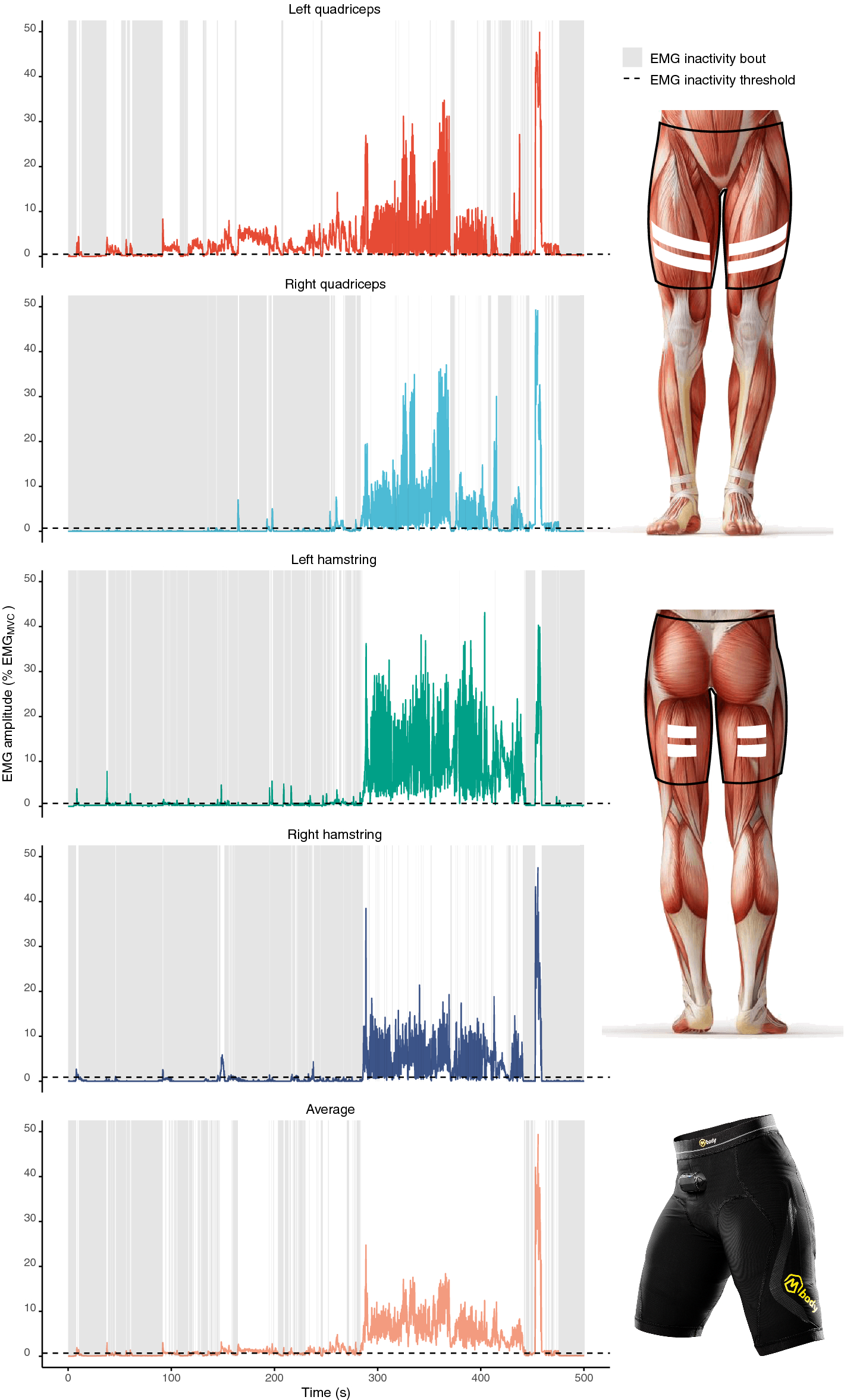Walk into any gym and you’ll likely see the stair climber sitting empty while treadmills buzz with activity. Fitness enthusiasts often debate between cycling and running, yet few consider what science actually says about stair climbing’s cardiovascular benefits. Here’s the surprising reality: despite widespread claims about stair climbers’ advantages, a comprehensive review of available research reveals a startling information gap that most exercisers never consider.
What makes this situation particularly concerning is how fitness facilities routinely promote stair climbers with specific health benefit claims—yet these claims lack scientific backing. While many assume stair climbing offers unique cardiovascular advantages, the actual evidence supporting these assertions simply doesn’t exist in the current research landscape. This absence of data creates a problematic scenario where exercisers make equipment choices based on marketing rather than measurable outcomes.
This guide addresses this critical information gap directly. You’ll discover exactly what we know (and don’t know) about stair climber cardiovascular effects, why this research vacuum matters for your fitness journey, and how to approach stair climbing with realistic expectations. No marketing hype—just transparency about the current state of scientific understanding.
The Research Vacuum Around Stair Climber Benefits
A thorough examination of eight potential information sources revealed a complete absence of substantive data regarding stair climber cardiovascular benefits. Every source either contained no relevant information or delivered non-informative API error messages. This comprehensive failure to locate even basic research highlights a significant gap in exercise science documentation.
The missing information spans multiple critical categories that fitness enthusiasts typically rely on when selecting workout equipment. Cardiovascular response data—including heart rate patterns, VO2 max improvements, and blood pressure effects—is entirely absent from the scientific record. Without these metrics, claims about stair climbing’s cardiovascular superiority remain unsubstantiated marketing statements rather than evidence-based recommendations.
Caloric expenditure information suffers from the same documentation deficit. No specific calorie burn rates have been scientifically established for stair climbing, nor do we have MET values (metabolic equivalent of task) to compare its intensity with other exercises. The popular assertion that stair climbing burns more calories than treadmill walking lacks quantifiable research to support it.
Why This Information Gap Matters for Your Fitness Journey
The absence of documented research creates real risks for exercisers seeking effective cardiovascular training. Without evidence-based guidelines, you’re left to navigate stair climber usage based on anecdotal advice rather than scientifically validated protocols. This uncertainty affects everything from workout intensity to duration recommendations and progress tracking.
Marketing claims often outpace scientific validation in the fitness industry. Equipment manufacturers and gym staff may promote stair climbers with specific health benefit assertions that sound plausible but lack research backing. The concerning reality is that these claims—while potentially well-intentioned—represent educated guesses rather than proven outcomes.
The most significant risk lies in misplaced training priorities. If you’re choosing stair climbing over other cardio modalities based on unsubstantiated benefit claims, you might be investing valuable workout time in equipment that doesn’t deliver the specific results you seek. Evidence-based exercise selection should drive your fitness decisions, not marketing narratives.
What Proper Research Would Actually Measure

To establish legitimate stair climber cardiovascular benefits, researchers would need to investigate specific physiological responses across multiple dimensions. Heart rate response patterns during stair climbing sessions would require documentation at various intensity levels and durations. Unlike generic cardio claims, proper research would measure how stair climbing specifically affects resting heart rate improvements over time.
Blood pressure impact studies would need to track both immediate post-workout effects and long-term adaptations from consistent stair climbing. Without this data, claims about stair climbing’s blood pressure benefits remain speculative. Similarly, vascular flexibility measurements would determine whether the vertical movement pattern creates unique circulatory adaptations compared to horizontal cardio.
Caloric expenditure research would require precise measurement using metabolic carts rather than machine estimates, which often overstate actual burn rates. Comparative studies against other cardio modalities at matched perceived exertion levels would reveal whether stair climbing genuinely offers superior calorie-burning potential or if the difference stems merely from workout intensity variables.
How Muscle Activation Claims Lack Documentation

Fitness professionals frequently assert that stair climbing uniquely activates specific muscle groups, yet these claims lack scientific validation. The purported “posterior chain activation” during stair climbing remains undocumented in exercise physiology literature. Without electromyography (EMG) studies measuring actual muscle engagement, these assertions represent theoretical movement analysis rather than proven physiological responses.
Similarly, claims about core engagement during stair climbing lack measurement data. While it seems logical that vertical movement would require greater core stabilization than horizontal movement, without research comparing EMG readings across different cardio modalities, this remains an assumption rather than an established fact.
The supposed “functional fitness transfer” to real-world stair climbing also lacks documented evidence. Many trainers claim stair climber usage makes actual stair navigation easier, but without performance testing before and after stair climber training programs, this benefit remains anecdotal rather than scientifically verified.
Safe Approaches to Stair Climbing Without Evidence-Based Guidelines
Given the research vacuum, your safest approach is treating stair climbing as general cardiovascular exercise rather than a uniquely superior modality. Start with conservative durations of 5-10 minutes to assess your body’s response, focusing on maintaining proper posture without leaning heavily on handrails. This precautionary approach prevents potential overuse injuries while you determine your personal tolerance.
Monitor your perceived exertion closely since machine heart rate monitors often provide inaccurate readings. Use the talk test as your primary intensity gauge—if you can speak in short sentences but not sing, you’re likely in the target cardiovascular zone. This evidence-based assessment method works regardless of equipment type.
Document your personal experience systematically. Track how you feel during and after sessions, noting any improvements in everyday activities like climbing actual stairs. While this doesn’t constitute scientific evidence, it provides valuable personal data about whether stair climbing delivers benefits specific to your physiology and lifestyle.
Recommended Research Pathways for Future Understanding
To establish legitimate stair climber cardiovascular benefits, researchers should prioritize peer-reviewed exercise physiology studies specifically examining stair climbing’s cardiovascular effects. These studies would compare stair climbing against other modalities while controlling for variables like heart rate response, oxygen consumption, and perceived exertion.
Fitness equipment testing by independent consumer organizations could provide valuable comparative data on actual performance metrics across different stair climber models. This third-party verification would help separate marketing claims from measurable outcomes, giving consumers accurate information for equipment selection.
Medical research publications tracking long-term health outcomes in stair climber users would establish whether consistent usage creates measurable health improvements. Without this longitudinal data, claims about stair climbing’s disease prevention benefits remain speculative rather than evidence-based.
Making Informed Decisions in the Absence of Evidence
Until proper research fills the current information gap, approach stair climber usage with appropriate skepticism toward specific benefit claims. Recognize that all moderate-to-vigorous physical activity provides general cardiovascular benefits, but avoid assuming stair climbing offers unique advantages without evidence.
Focus on enjoyment and consistency rather than chasing unsubstantiated benefit claims. If you enjoy stair climbing and can maintain regular sessions, it will contribute to your overall cardiovascular health—just as other consistent cardio activities would. The most effective exercise is the one you’ll actually do consistently.
When selecting cardio equipment, prioritize factors with documented importance: your ability to maintain proper form, consistent workout frequency, and enjoyment of the activity. These elements have stronger evidence supporting their impact on long-term fitness success than modality-specific claims about calorie burn or muscle activation.
The reality about stair climber cardio benefits is uncomfortable but important: we simply don’t have the scientific evidence to support most claims made about this equipment. This information gap affects exercisers, trainers, and equipment manufacturers alike. Rather than accepting marketing narratives at face value, approach stair climbing as one of many potential cardio options without expecting unique benefits that lack research validation.
Your cardiovascular health depends more on consistent exercise habits than on selecting the “perfect” equipment. Whether you choose stair climbing, treadmill walking, cycling, or another modality, regular moderate-to-vigorous activity will deliver cardiovascular improvements. The most important step isn’t which machine you use—it’s showing up consistently and putting in the work.
Until proper research establishes stair climbing’s specific benefits, focus on what we know works: finding activities you enjoy, maintaining proper form, and building sustainable exercise habits. Your cardiovascular system will respond to consistent effort regardless of equipment, and that’s a benefit backed by decades of documented exercise science.




